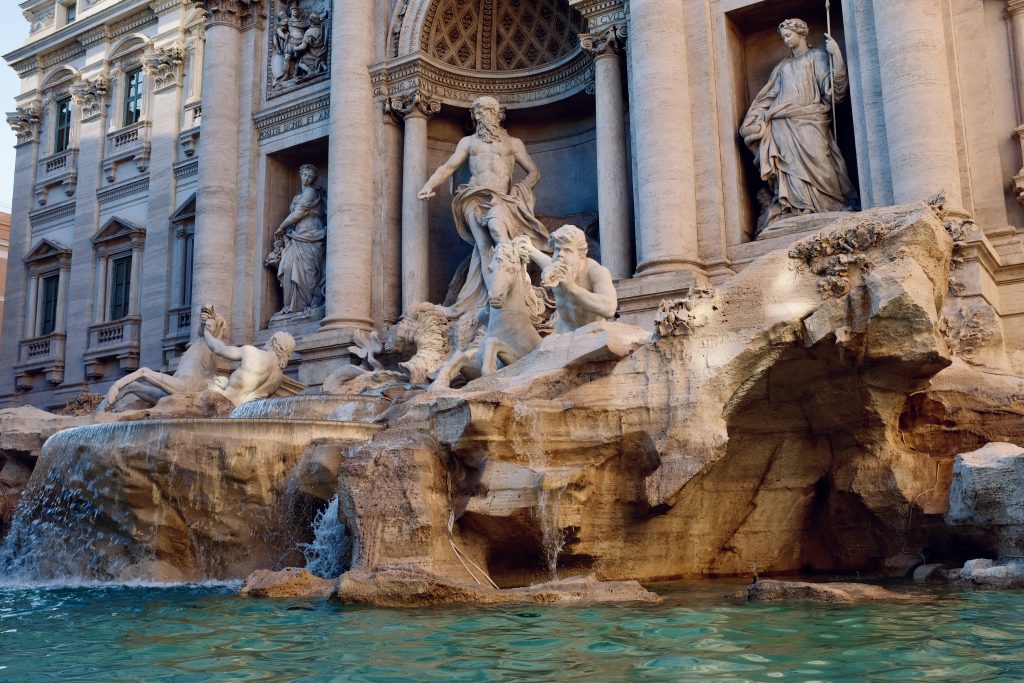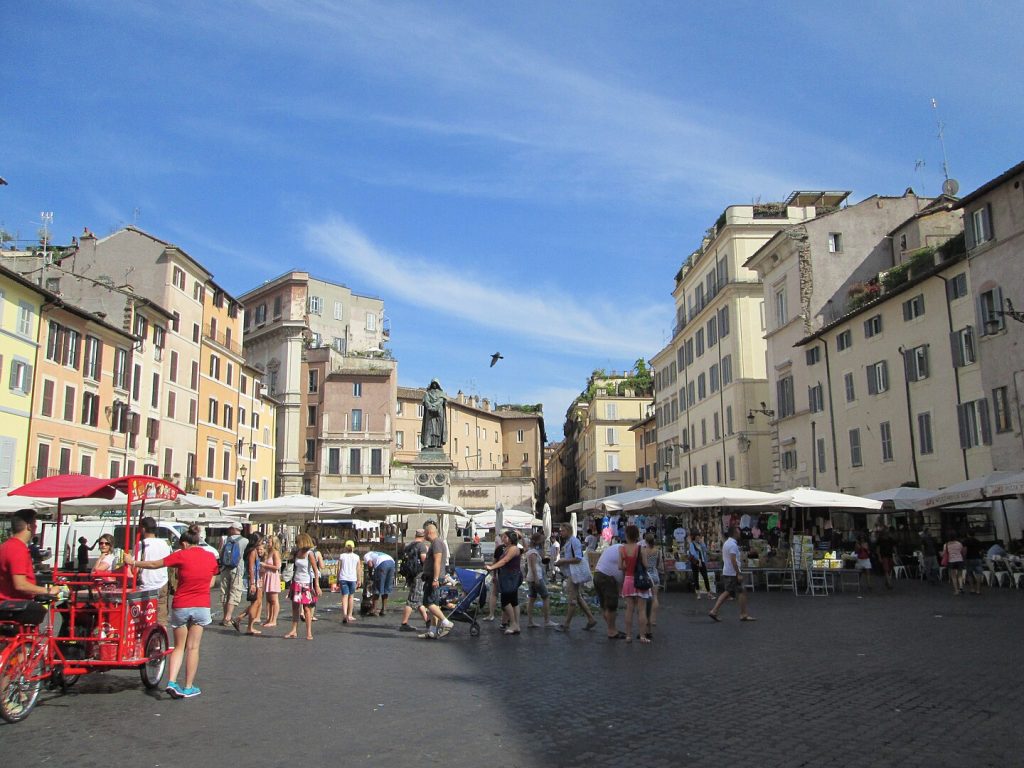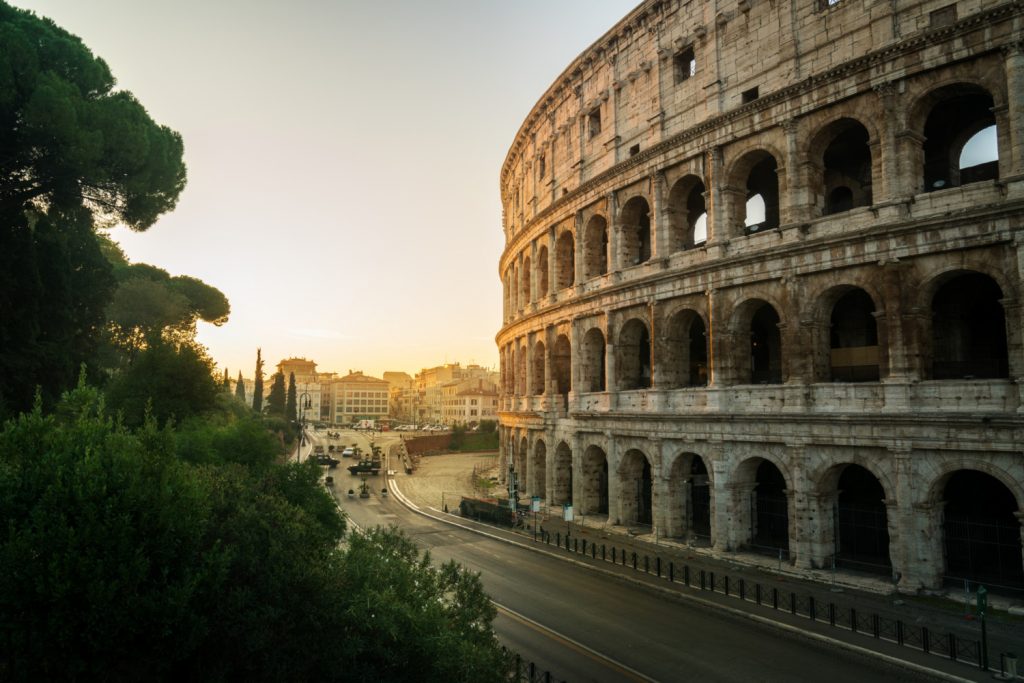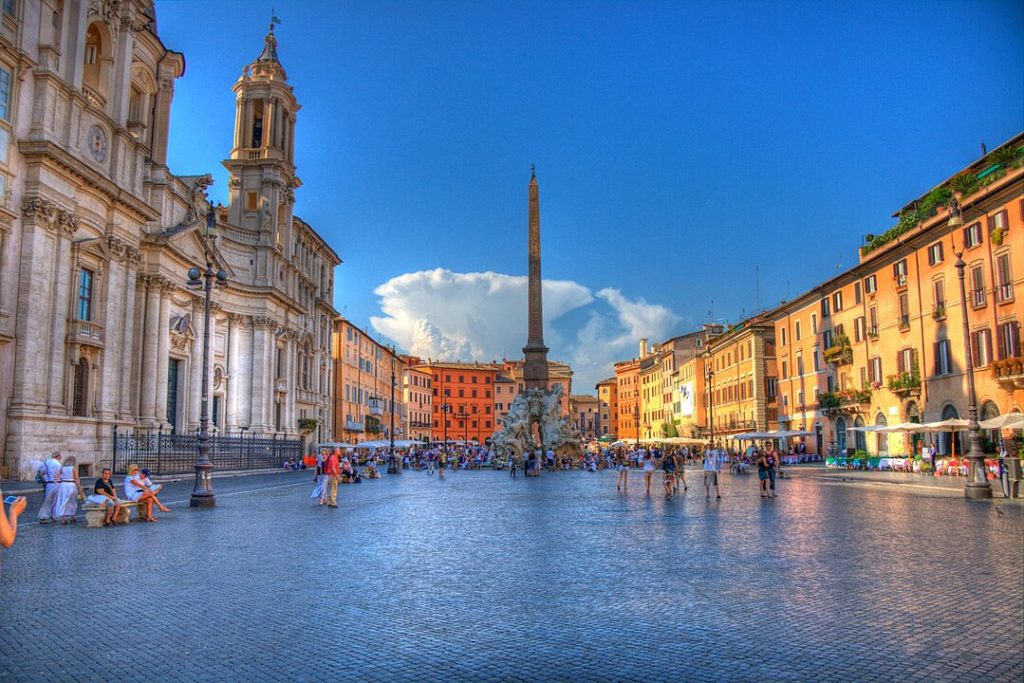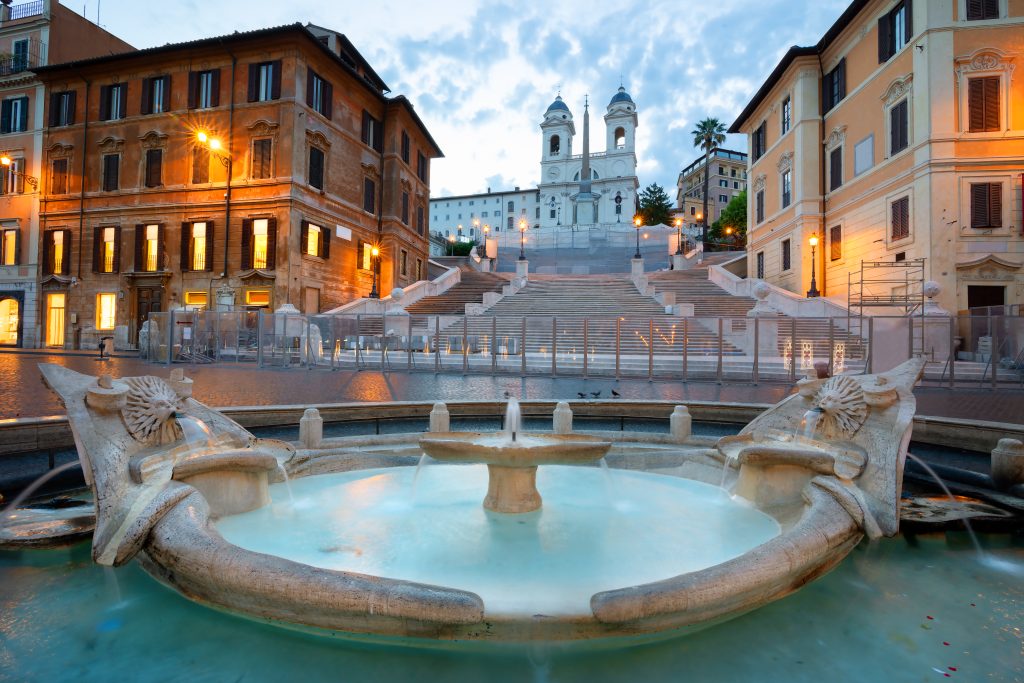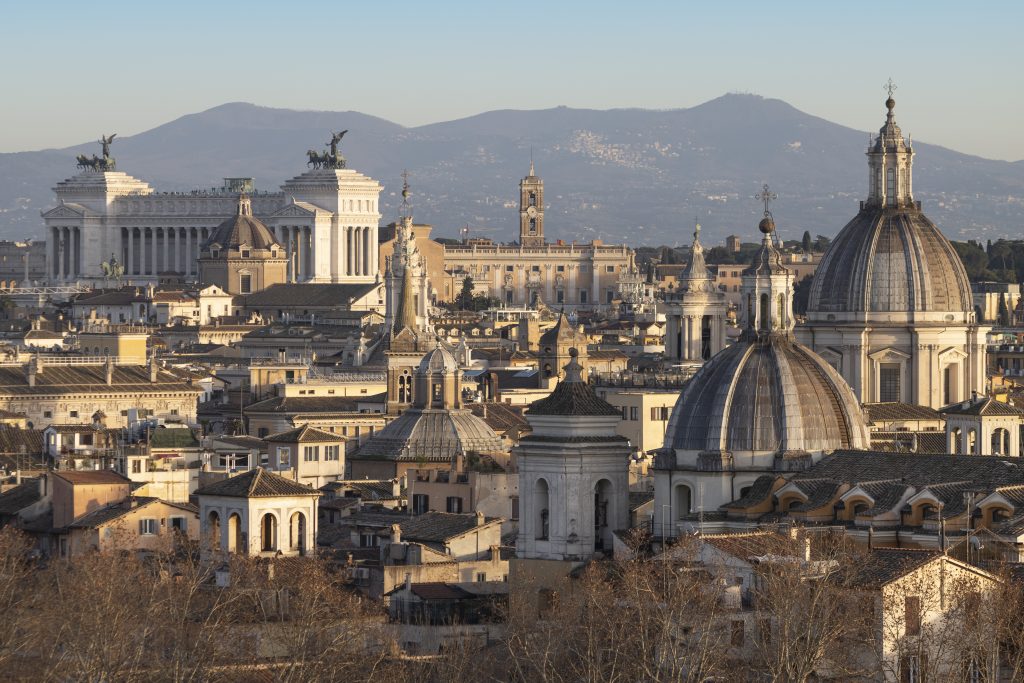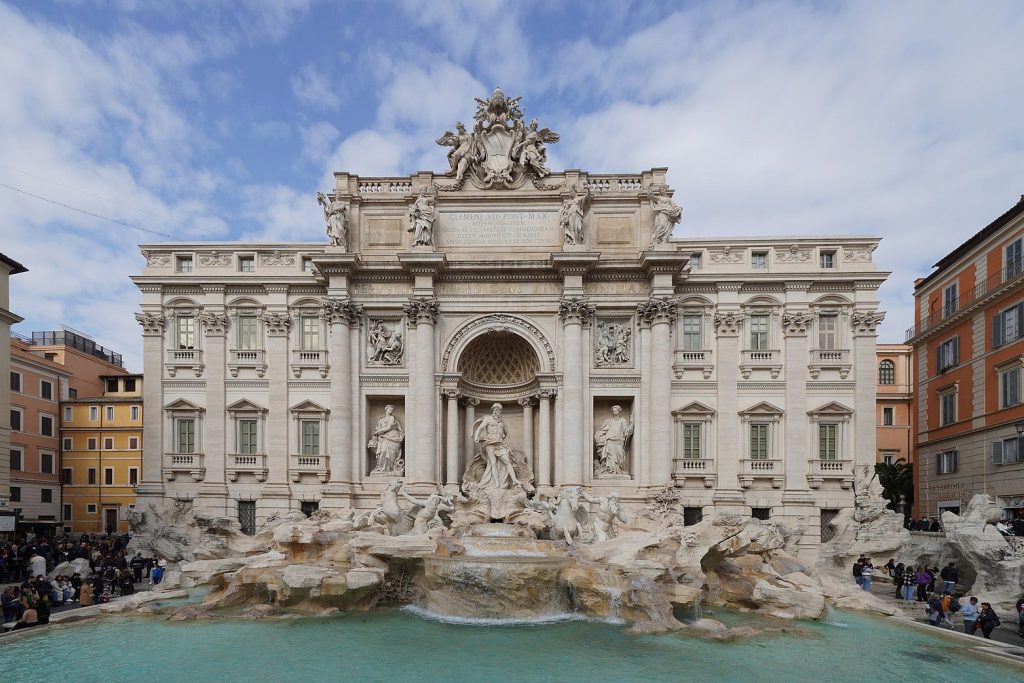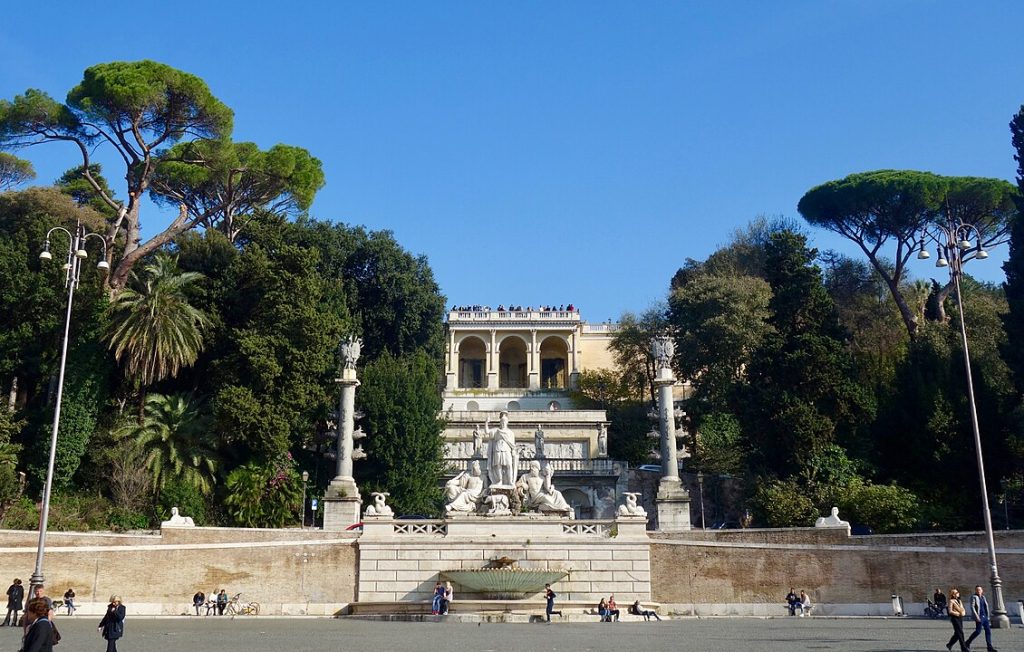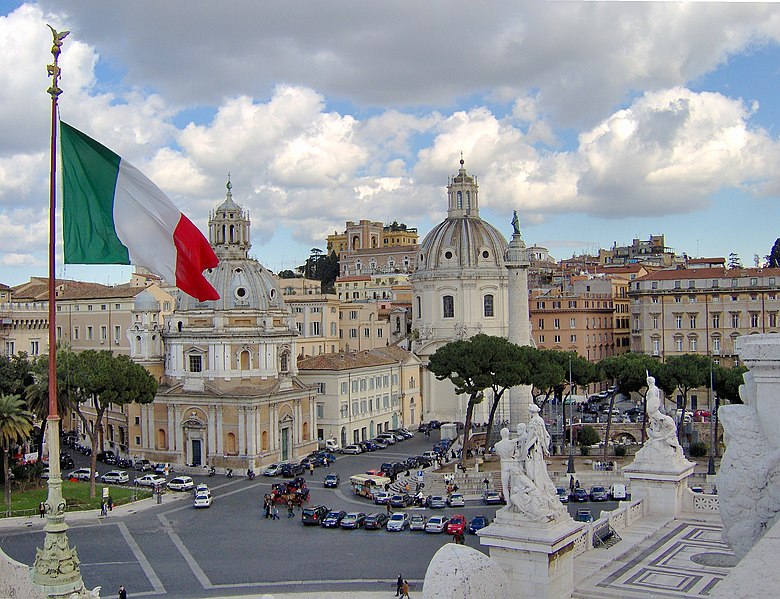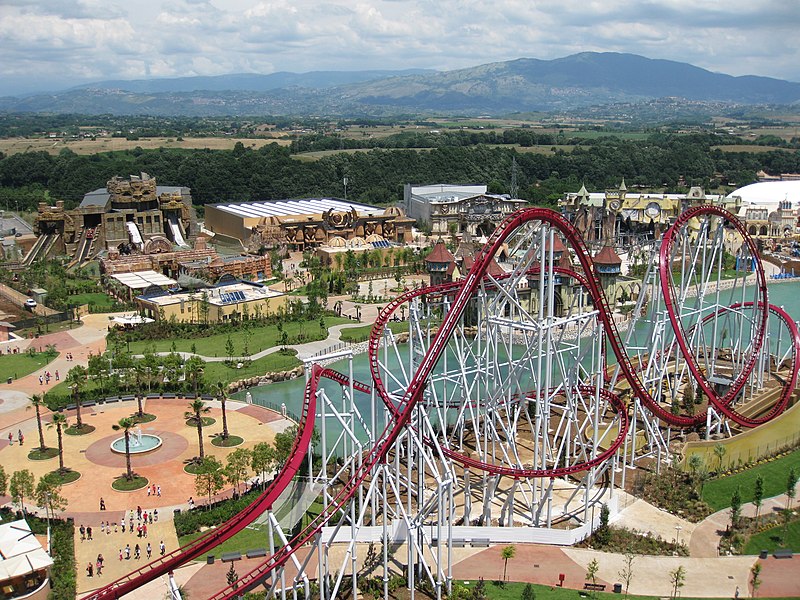- 1️⃣ Introduction - the heart of Rome
- 2️⃣ A brief history of Piazza Venezia - from the Middle Ages to modernity
- 3️⃣ Palazzo Venezia - residence of popes and Mussolini
- 4️⃣ Vittoriano - Altar of the Fatherland and Tomb of the Unknown Soldier
- 5️⃣ Michelangelo and his footprint around the square
- 6️⃣ Piazza Venezia under fascism
- 7️⃣ Clash of styles - baroque, classicism and monumentalism
- 8️⃣ Traffic and chaos - square today
1️⃣ Introduction - the heart of Rome

Piazza Venezia is one of the most distinctive places in Rome - full of contrasts, history and monumental architecture. Situated at the foot of the Capitoline Hill, this square is the true heart of the Eternal City - both geographically and symbolically.
At first glance, the powerful white monument attracts attention Vittoriano, which towers over the square. Right next to it stands Palazzo Venezia - Renaissance palace, from which Mussolini spoke to the crowds. In its vicinity he also created Michelangelo, and the ancient remains of Rome are still hidden underground.
Piazza Venezia is an ideal starting point for sightseeing - from here it is close to the Capitol, to Roman Forum whether Colosseum, but also for shopping at via del Corso. It's a place where past and present are constantly intertwined - and that's why it's worth getting to know better.
2️⃣ A brief history of Piazza Venezia - from the Middle Ages to modernity

Piazza Venezia, located at the intersection of Rome's most important streets, has for centuries served as a of the representative square of the city. Its history is a mosaic of papal influence, Renaissance ambitions and political changes of the 19th and 20th centuries. Today, it is a place that bridges different eras and historical narratives.
💠 Medieval beginnings
The first buildings in the area of today's square appeared as early as the Middle Ages, but it was not until the 15th century that the following were built here Palazzo Venezia - The palace that gave the square its name. The founder was Pope Paul II, and the building itself served as the residence and embassy of the Republic of Venice.
💠 Birth of the representative square
In the following centuries, the square grew in importance. Thanks to its strategic location, it became one of Rome's main transportation hubs. In the 19th century, the start of demolition of older buildings, to make room for the monumental Vittoriano, commemorating the unification of Italy.
💠 Scene of historic speeches
In the 20th century, the square became the backdrop for major political events. From the balcony of the Palazzo Venezia he spoke Benito Mussolini, and the Piazza Venezia has become a place of fascist demonstrations and parades. After World War II it regained a more neutral character - today it is an important tourist and administrative point.
3️⃣ Palazzo Venezia - residence of popes and Mussolini
🌿 Between execution and basilica
👉 Discover the contrasts Campo de' Fiori - Rome's most colorful square!

Just off the Piazza Venezia stands the monumental Palazzo Venezia, a building with an austere facade and a turbulent history. Over the centuries, the palace has served many functions - from seats of the popes, by embassy of the Republic of Venice, all the way to the center of fascist propaganda.
💠 Papal residence and diplomatic center
Built in the 15th century on the initiative of the Pope Paul II, the palace was one of the earliest examples of Renaissance secular architecture in Rome. It served as a papal residence and was later given to the Republic of Venice, which established its embassy here - hence the name of the building and the square.
💠 Dictator's seat
In the 20th century, Palazzo Venezia took on a new, dark meaning. It was from here Benito Mussolini spoke to the crowds, announcing decisions and manifesting power. The balcony of the palace has become one of the most recognizable symbols of Italian fascism.
💠 Museum and witness to history
Today the Palazzo Venezia houses museum of arts and crafts, and its courtyards and halls can be visited. The palace remains A silent witness to the centuries-old history of Rome - From the papal era to the totalitarianism of the 20th century.
4️⃣ Vittoriano - Altar of the Fatherland and Tomb of the Unknown Soldier

Dominating the Piazza Venezia Vittoriano is one of the most monumental and controversial works of architecture in Rome. Built of white marble from Botticino, it was meant to pay homage to the King Victor Emmanuel II - the unifier of Italy - and symbolize the modern, unified Italian state.
💠 Birth of a national symbol
Construction began in 1885 and was officially completed in 1927. Giuseppe Sacconi's design called for a combination of classicism and monumentalism, which was meant to emphasize national pride and continuity with ancient Rome. It quickly became known as the "Altar of the Fatherland" (Altare della Patria)..
💠 Tomb of the Unknown Soldier
Since 1921, the center of Vittoriano has been home to the Tomb of the Unknown Soldier - A memorial to the fallen of World War I. The eternal fire and honor guard underscore its importance to Italian identity. It is the site of official state ceremonies, celebrated with full ceremony.
💠 Admiration and criticism
Although Vittoriano attracts tourists and is very impressive, there is no shortage of criticism. It has been accused of excessive pomposity, the destruction of some of the historic buildings and detachment from the Roman style. Despite this, today it is one of the the most important symbols of modern Italy And a must-see on any trip.
5️⃣ Michelangelo and his footprint around the square
💧 Have you dropped a coin yet?
👉 Experience the magic Trevi Fountains - One of the icons of the Eternal City!

Although Piazza Venezia itself was not the immediate site of Michelangelo's work, its influence on the immediate area is invaluable. Just a few steps away is the Capitol, whose buildings the master transformed on behalf of Pope Paul III.
💠 Capitol according to the genius of the Renaissance
In the 16th century, Michelangelo was tasked with transforming the Capitoline Hill - sites of great importance to the history of Rome. He designed the new square layout, surrounded by three palaces (Palazzo dei Conservatori, Palazzo Senatorio and Palazzo Nuovo), forming one of the Europe's first modern urban spaces.
💠 Geometric square and staircase Cordonata
Characteristic The oval piazza with the star and the monumental Cordonata staircase - leading from the Piazza Venezia to the Capitol - is the work of Michelangelo. The layout of the space was meant to emphasize symmetry and dignity places, symbolically turning the gaze away from the Roman Forum and towards modern Rome.
💠 The spirit of art in the background of politics
Thanks to Michelangelo, the area around Piazza Venezia has gained a architectural integrity and artistic majesty, which still inspires today. In the shadow of the monumental edifices and the history of Mussolini, it is worth remembering that just a few meters away, Renaissance meets antiquity, and the spirit of art hovers over the urban hustle and bustle.
6️⃣ Piazza Venezia under fascism

In the first half of the 20th century, Piazza Venezia acquired a new, dark identity - it became a symbol of fascist power and the site of Benito Mussolini's spectacular propaganda displays. It was here that the modern history of the square as a political stage began.
💠 Balcony renamed as rostrum
From the balcony Palazzo Venezia Mussolini repeatedly addressed the crowds - announcing Italy's entry into the war, announcing reforms and demonstrating strength. The square was filled with tens of thousands of people, and broadcasts of the speeches reached the entire country. The balcony became an icon of fascist rhetoric.
💠 Monumental setting and imperial order
Fascist authorities introduced changes to the spatial layout of the square and its surroundings. Surrounding tenements and medieval buildings were demolished to create a more monumental traffic routes, like Via dell'Impero (today's Via dei Fori Imperiali). Everything was meant to resemble the imperial greatness of ancient Rome.
💠 Between the past and the future
For the regime, Piazza Venezia was the ideal place to combine the heritage of ancient Rome with a new ideology. Although today it is one of the capital's many historic sites, in the 1930s and 1940s it was a the beating heart of the regime, the scene of transformations, speeches and manipulation of the emotions of crowds.
7️⃣ Clash of styles - baroque, classicism and monumentalism
🪜 Europe's most famous staircase
👉 See Spanish Steps - roman postcard classics!

Piazza Venezia is not only a place full of history, but also a a real lesson in architecture under the open sky. Walking around the square, it's hard not to notice how the different architectural styles clash and intermingle, creating a fascinating - though sometimes controversial - mosaic of forms.
💠 Renaissance austerity of Palazzo Venezia
On the one hand, we have Palazzo Venezia, built in the 15th century - an example of early Renaissance secular architecture, austere and massive. Its simple facade contrasts with the splendor of other buildings around it, but at the same time gives the place solemnity and historical depth.
💠 The monumental white of Vittoriano marble
On the opposite side grows Vittoriano, or Altar of the Fatherland - example neoclassicism on steroids, as some architects say. Its size, white color and multitude of sculptures make it the dominant feature of the square, but also the subject of numerous debates about its aesthetic value.
💠 Modern intrusions and urban compromises
During the fascist period, new thoroughfares and public spaces were added, subordinated to ideology and the need for monumentality. The result? A square that blends Renaissance with fascism, Baroque with classicism, and history with modernity - often in a chaotic but extremely interesting way.
8️⃣ Traffic and chaos - square today

Although Piazza Venezia is a place of great historical and cultural value, today many tourists and residents associate it... with traffic chaos. The square has become one of the busiest traffic junctions in Rome, where modernity clashes with the heritage of the past.
💠 Intersection of the city's arteries
Through Piazza Venezia run the following main streets of Rome - Via del Corso, Via dei Fori Imperiali, Via Nazionale and Via del Plebiscito. During rush hour, the square resembles body in constant motion, with hundreds of vehicles, buses and scooters fighting for priority at an intersection without traffic lights.
💠 An island of pedestrians in a sea of cars
Although foot traffic is heavy here, tourists often have to squeeze between vehicles to reach the Vittoriano or the stairs leading to the Capitol. For many, this is stressful experience, but also part of the "Roman folklore" that gives the place its character.
💠 Plans to clean up the square
For years there has been talk of traffic reorganization and partial pedestrianization of the square. City authorities are making attempts to improve accessibility and safety - new sidewalks, hiking paths and multimedia information are appearing. However, for many, Piazza Venezia is still a symbolic scene of the struggle between history and modernity.
9️⃣ How to visit Piazza Venezia - practical tips
Piazza Venezia is not only a landmark, but also a the perfect start to a tour of Rome. In order to fully appreciate its significance and charm, it is worth preparing accordingly - both logistically and mentally.
💠 Best time to visit
The square is sometimes crowded throughout the day, but the best time to visit is early morning or eveningwhen there is less traffic and the light perfectly highlights the details of the architecture. Vittoriano's evening illumination is particularly impressive.
💠 What to see and where to enter
- Enter the Vittoriano observation deck - By a panoramic elevator you will get to the roof of the monument, from where you can see the One of the best views of Rome.
- Visit the Museum at the Palazzo Venezia, to learn about the works of art, but also to feel the atmosphere of the palace from the papal and fascist times.
- Enter the Capitol On the Cordonata staircase designed by Michelangelo.
💠 Practical tips
- Dress comfortably - The neighborhood is an area of hills and paved streets.
- Watch out for traffic - Crosswalks are sometimes unintuitive, and drivers do not always stop for pedestrians.
- Take a break - In the side streets you will find quieter places for coffee, away from the hustle and bustle of the square.
🔟 Interesting places nearby - history at your fingertips

Piazza Venezia is excellent starting point, because almost every step in the neighborhood leads to another era. Within a few minutes walk you will find the most important monuments of Rome, galleries, observation decks and charming streets - all surrounded by monumental history.
💠 Capitol and Capitoline Museums
Just beyond the square rises the Capitoline Hill, which offers a view of the Roman Forum. Worth a visit Capitoline Museums - The oldest public museum in the world, full of sculptures, paintings and relics of ancient Rome.
💠 Roman Forum and Colosseum
Piazza Venezia is just a few minutes' walk from the Roman Forum - The heart of the ancient empire. From there, it's only a step to Colosseum, one of the world's most famous buildings. Along the way you pass Arch of Titus i Via Sacra - The path taken by the triumphs.
💠 Via del Corso and shopping amidst history
For lovers of the urban climate - Via del Corso is the main commercial artery, full of stores, cafes and elegant facades. It runs straight from Piazza Venezia to Piazza del Popolo, leading through the bustling center.
💠 Not just the classics
Nearby you will also find Church of the Gesù - Jesuit Baroque pearl, tucked away on a side street, and Piazza di San Marco, at which it is worth stopping if only for a moment. Each turn in this part of the city hides architectural surprise.
1️⃣1️⃣ Summary - the symbolic center of the Eternal City

Piazza Venezia is more than just a square. It's a place where all layers of Rome's history meet - from ancient times, through the papal era, to the dramatic decades of the 20th century. Every stone, building and architectural detail here has its own significance.
💠 A space full of contrasts
In one place you will see Renaissance austerity, fascist propaganda, Baroque decoration and classical monumentalism. Piazza Venezia is a living museum of ideas, styles and ambitions, which have shaped Italy over the centuries.
💠 A must for every visit
Thanks to its location, the square is a natural hub - here tourist routes begin, here the main streets intersect, and its terraces overlook the panorama of the capital, which will take your breath away. Even if you don't plan - you will end up here sooner or later anyway.
💠 Piazza Venezia is the quintessential Rome
Loud, monumental, full of contradictions, and yet fascinating. It's a place that doesn't let you pass by indifferently. Every visit here is a new look - and a new story to discover.

